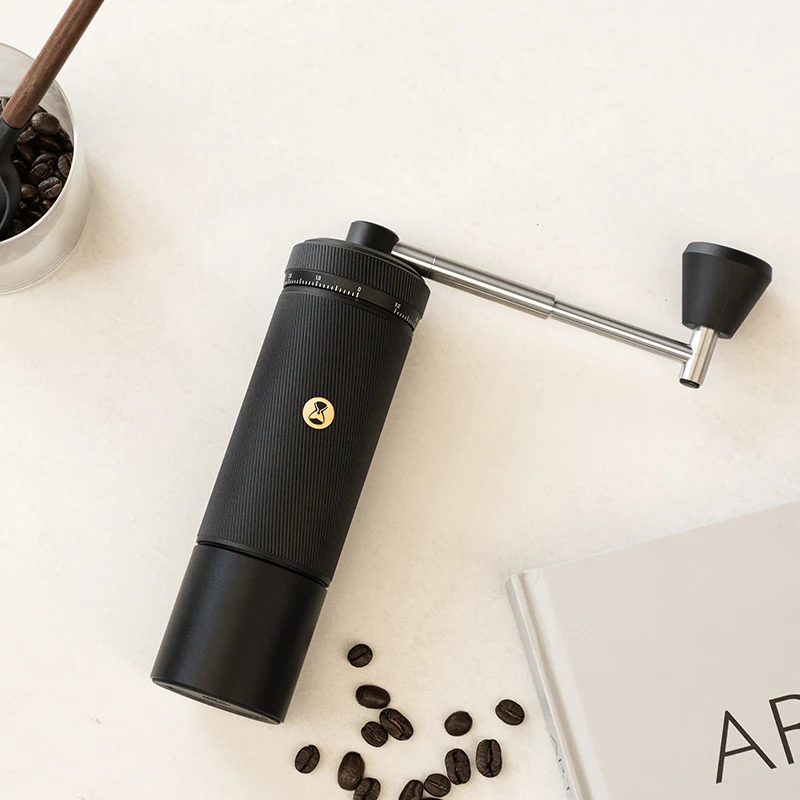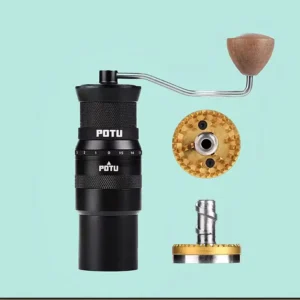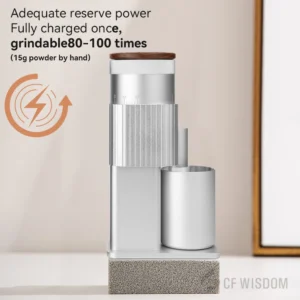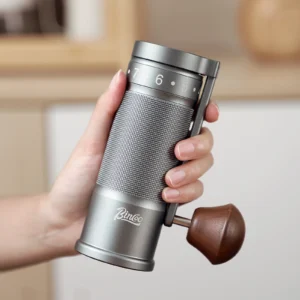Understanding Espresso’s Demanding Nature
Espresso is not just another coffee brewing method—it’s a precise art form that demands perfection at every step. Unlike other brewing processes, espresso operates under intense pressure (around 9 bars) and extracts coffee in a remarkably short time frame of just 25-30 seconds. This concentrated brewing method creates a rich, complex beverage with a distinctive crema on top, but it also means that any small flaw in preparation becomes dramatically amplified in the final product.
What makes espresso truly unique is its unforgiving nature. While drip coffee and French press can be somewhat forgiving of inconsistencies, espresso mercilessly reveals every error. The relationship between grind quality and espresso output is direct and immediate—a slight change in grind size can transform a balanced, sweet shot into a sour or bitter disappointment.
Many coffee enthusiasts are surprised to learn that the grinder actually plays an equal or even more important role than the espresso machine itself. This is because the particle size and consistency of your coffee grounds fundamentally determine how water flows through the coffee puck during extraction.
For this reason, understanding the differences between burr and blade grinders becomes essential knowledge for anyone serious about espresso. The specific characteristics of burr grinders make them particularly well-suited for the demanding nature of espresso preparation, especially when you’re working to achieve the perfect grind setting for espresso.
Grind Consistency: The Critical Factor in Espresso Extraction
Grind consistency refers to how uniform your coffee particles are in size. When you look at properly ground espresso coffee, it should resemble fine sugar or table salt with particles that appear remarkably similar to one another. This uniformity is not just aesthetically pleasing—it’s fundamental to proper extraction.
When grounds lack consistency, they create two problematic extremes: “fines” (particles that are too small) and “boulders” (particles that are too large). During the high-pressure espresso extraction, these different-sized particles extract at dramatically different rates. Fines over-extract almost instantly, releasing bitter compounds, while boulders under-extract, contributing sour, weak flavors. The result? A shot that somehow manages to taste both bitter and sour simultaneously—a common complaint among those using inadequate grinders.
This consistency matters significantly more for espresso than for other brewing methods because of the high pressure and short contact time. In pour-over or French press brewing, water has minutes to interact with the coffee, somewhat compensating for inconsistency. With espresso, water rushes through the puck in seconds, amplifying any inconsistencies.
The comparison between burr and blade grinders highlights why burrs excel at creating the consistency espresso demands. Burr grinders produce grounds that extract evenly, creating balanced flavors that showcase the coffee’s intended profile. Understanding how grind size affects espresso is crucial for getting the most from your coffee beans and equipment.
How Burr Grinders Work: The Mechanics of Superior Grinding
At the heart of every burr grinder is a remarkably simple yet effective mechanism: two abrasive surfaces (the burrs) positioned a specific distance apart. As coffee beans enter this system, they’re methodically crushed between these surfaces rather than haphazardly chopped. This crushing action is the key to the burr grinder’s superior performance.
The design ensures that coffee beans must be ground to a specific size before they can pass through the gap between the burrs. This fundamental principle guarantees consistency in a way that blade grinders simply cannot match. With burr grinders:
- Coffee beans are trapped between the burrs until properly sized
- The adjustable gap precisely controls the final particle size
- The grinding process is methodical and thorough rather than random
- Beans are crushed rather than chopped, creating more uniform particles
In stark contrast, blade grinders operate more like blenders—they simply chop beans with spinning blades. This creates wildly inconsistent results where some particles might be powder-fine while others remain large chunks. There’s no mechanism to ensure any level of consistency or control over the final product.
The difference a burr grinder makes becomes immediately apparent when you compare grounds side by side—the difference is visible to the naked eye and dramatically affects extraction quality. This is why serious espresso enthusiasts invest in quality manual coffee burr grinders to achieve the consistency their brewing method demands.
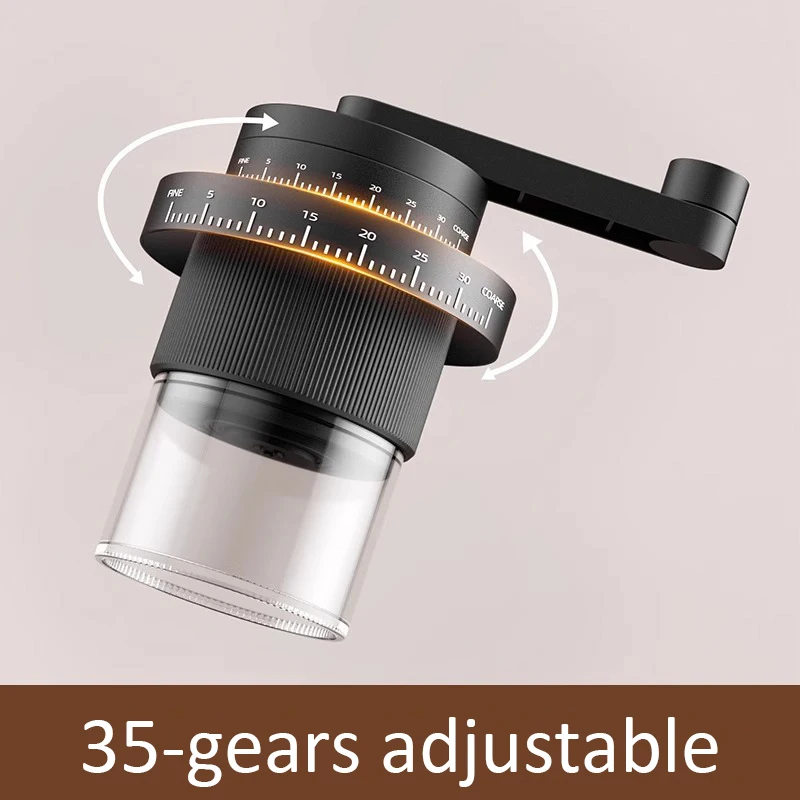
The Direct Impact on Espresso Extraction Quality
Coffee extraction is fundamentally a scientific process where water dissolves soluble compounds from coffee grounds. The goal is to extract the desirable flavors (sweetness, acidity, and pleasant aromatics) while leaving behind the undesirable ones (excessive bitterness and astringency). This delicate balance is particularly challenging with espresso because of the intense pressure and short extraction time.
When grounds are consistent in size, water flows through the coffee puck evenly, extracting compounds from all particles at roughly the same rate. This creates a balanced, harmonious shot where sweetness, acidity, and body exist in proper proportion. However, inconsistent grounds create a dramatically different scenario.
With mixed particle sizes, smaller fragments over-extract rapidly, releasing harsh, bitter compounds, while larger chunks remain under-extracted, contributing sour, thin flavors. The unfortunate result is that your espresso can simultaneously taste both over and under-extracted—a common complaint when using inadequate grinders.
Another critical problem caused by inconsistent grinds is channeling—where water finds paths of least resistance through the coffee puck. Rather than extracting evenly across all grounds, water rushes through these channels, over-extracting grounds in its path while leaving others barely touched. This creates uneven extraction and weak, imbalanced espresso.
Understanding the proper espresso grind texture is essential for achieving that perfect balance between flavor compounds, resulting in the sweet, complex shots that make espresso so beloved.
Flavor Clarity and Crema: The Sensory Benefits
Beyond technical extraction factors, burr grinders deliver noticeable sensory improvements in your espresso. The most immediate benefit is flavor clarity—the ability to taste distinct flavor notes rather than a muddled, generic “coffee” flavor. Properly ground coffee allows you to experience the chocolate, fruit, nut, or floral characteristics that define specialty coffee.
Burr grinders better preserve the delicate aromatics and oils in coffee beans for several reasons:
- They generate significantly less heat during grinding
- The crushing action doesn’t volatilize aromatics as aggressively
- The consistent extraction allows nuanced flavors to shine through
Heat generation during grinding is a particularly important factor that’s often overlooked. Blade grinders operate at high speeds, creating friction and heat that can literally cook volatile compounds before brewing even begins. Many burr grinders operate at lower speeds, preserving those delicate flavors.
Perhaps most visibly, grind consistency directly affects crema—that rich, golden-brown foam that tops a properly prepared espresso. Consistent particles extract evenly, releasing the appropriate amount of CO2 and emulsified oils to create thick, persistent crema with a beautiful tiger-striped appearance. Poor grind consistency often results in thin, quickly dissipating crema or excessively foamy crema that lacks richness.
The pivotal role coffee grinders play in flavor can’t be overstated, which is why many enthusiasts invest in specialized espresso coffee hand grinders designed specifically to maximize flavor clarity and crema quality.
Precision and Control: The Adjustability Advantage
Espresso extraction operates within remarkably narrow parameters—just a slight change in grind size can transform a balanced shot into an under or over-extracted one. This sensitivity makes precise adjustability one of the most valuable features of burr grinders.
Quality burr grinders offer fine-tuned control over particle size that blade grinders simply cannot achieve. This precision manifests in two main adjustment systems:
- Stepped adjustment: Featuring preset notches or clicks between settings
- Stepless adjustment: Allowing infinite adjustment points for maximum precision
The contrast with blade grinders is stark—they offer no true adjustability at all. The only variables you can change are grinding time and intensity, which affect average particle size but do nothing to improve consistency. This makes repeatable results virtually impossible to achieve.
Perhaps most importantly, burr grinders offer repeatability—the ability to reproduce the same grind profile consistently day after day. This consistency is essential when you consider that a quarter turn finer on your grinder might change a 20-second shot to a 27-second shot, dramatically affecting flavor balance.
For those serious about espresso, fine adjustment hand grinders provide the control necessary to dial in shots with precision. Understanding precision grind adjustment for espresso becomes an essential skill in the pursuit of perfect extraction.
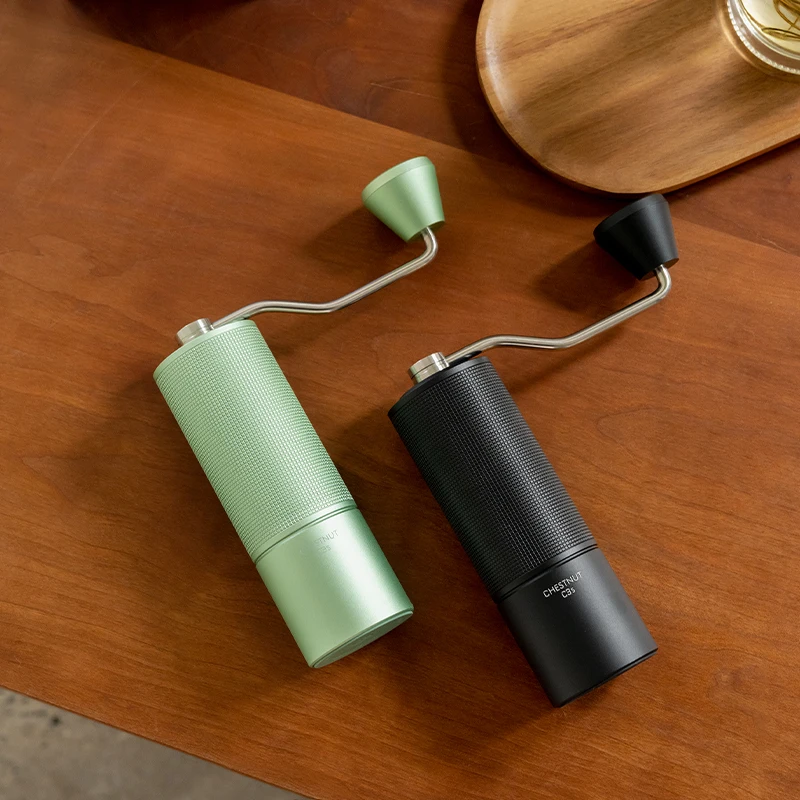
Conical vs Flat Burrs: Understanding Different Burr Types
When exploring burr grinders, you’ll encounter two main burr designs—conical and flat—each with distinct characteristics that affect grinding performance and espresso quality.
| Feature | Conical Burrs | Flat Burrs |
|---|---|---|
| Shape | Cone-shaped inner burr fitting into a ring-shaped outer burr | Two parallel ring-shaped discs with teeth |
| Grind Profile | Slightly wider particle distribution | Maximum particle uniformity |
| Heat Generation | Lower (less surface contact) | Higher (more surface contact) |
| Retention | Typically less grounds retained | May retain slightly more grounds |
| Common In | Many home grinders, especially manual ones | Commercial and higher-end electric models |
Conical burrs excel with oily, darker-roasted beans and generally operate more quietly with less heat generation. They produce a grind with a small percentage of fines, which some espresso enthusiasts prefer for added body and perceived richness in the cup.
Flat burrs, available in quality flat burr hand grinders, create maximum particle uniformity, which can translate to exceptionally clean, clear flavor profiles. This makes them particularly popular for light to medium roasts where clarity and distinct flavor notes are prioritized.
It’s worth noting that either type vastly outperforms any blade grinder. The choice between conical and flat often comes down to personal preference in flavor profile rather than objective quality differences. Learning about flat burr grinders for exceptional coffee can help you determine which style might better suit your taste preferences.
Finding the Right Burr Grinder for Your Espresso Journey
Selecting the right burr grinder involves balancing several factors including budget, build quality, and specific features that enhance espresso preparation. While premium models offer exceptional performance, there are quality options at various price points.
When evaluating burr grinders for espresso, consider these key factors:
- Burr material and quality: Ceramic burrs resist heat but may be more fragile; steel burrs are durable but conduct more heat
- Adjustment precision: Look for fine, precise adjustments specifically designed for espresso
- Grind consistency: Research performance reviews focusing specifically on espresso consistency
- Build quality: Solid construction reduces burr movement, improving consistency
- Manual vs. electric: Manual grinders often offer excellent value and performance for espresso
Entry-level burr grinders (around $100-150) can produce acceptable espresso results but may lack the precision and consistency of higher-end models. Mid-range options ($150-300) offer significant improvements in adjustment capability and consistency. Premium manual grinders often outperform electric models at similar price points when it comes to grind quality.
For those serious about espresso, investing in a quality grinder should actually take priority over an expensive machine. Even a modest espresso machine paired with an excellent grinder will outperform an expensive machine with a subpar grinder.
The manual espresso grinder category offers excellent options for those seeking premium grinding performance without the cost of high-end electric models. Learning more about manual coffee grinders for espresso can help you make an informed decision based on your specific needs.
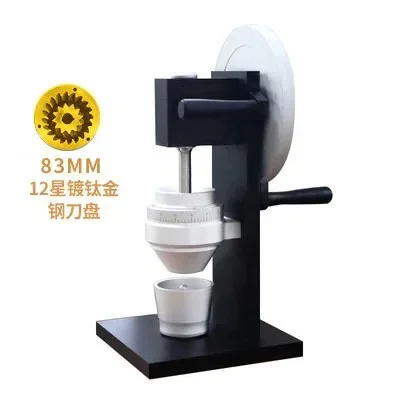
Fine Adjustment Hand Grinder, Precision Manual Grinder, Travel Coffee Grinder
Price range: $185.11 through $494.63 Select options This product has multiple variants. The options may be chosen on the product pageHand Burr Grinder, Hand Crank Coffee Grinder, Manual Espresso Grinder, Portable Coffee Grinder
Price range: $262.72 through $300.22 Select options This product has multiple variants. The options may be chosen on the product pageManual Burr Mill, Manual Coffee Grinder Stainless Steel, Manual Coffee Mill Grinder, Mechanical Coffee Grinder
Price range: $127.26 through $130.32 Select options This product has multiple variants. The options may be chosen on the product pageHand Burr Grinder, Manual Coffee Grinder Stainless Steel, Precision Manual Grinder
Price range: $183.64 through $187.52 Select options This product has multiple variants. The options may be chosen on the product page
Common Questions About Burr Grinders for Espresso
Can blade grinders ever work for espresso?
No, blade grinders fundamentally cannot produce the consistent fine grind required for proper espresso. The chopping action creates a mixture of fine powder and larger chunks that extract unevenly, resulting in channeling and poor flavor. Even the most careful technique with a blade grinder cannot overcome this inherent design limitation.
Can manual burr grinders produce espresso-quality results?
Absolutely. Many premium manual burr grinders produce exceptional grind quality that equals or surpasses electric grinders costing much more. The key is finding a manual grinder specifically designed for espresso, with fine adjustment capability and burrs engineered for consistent fine grinding.
How often do burrs need replacement?
Quality burrs in a well-maintained grinder can last for years before requiring replacement. Steel burrs typically process 500-1000 pounds of coffee before showing significant wear, while ceramic burrs may last longer but are more vulnerable to damage from foreign objects. For the average home user, this translates to many years of service.
Does a more expensive grinder always mean better quality?
Not necessarily. While there is generally correlation between price and quality, some mid-range grinders provide exceptional value. The most important factors are burr quality, adjustment precision, and build stability rather than brand name or additional features.
Does grinder quality matter less with pressurized portafilters?
Pressurized portafilters can somewhat compensate for inconsistent grinds by artificially creating pressure, but they cannot fix fundamental extraction problems. Even with these “forgiving” systems, a consistent grind will produce noticeably better results in flavor clarity and balance. When you eventually upgrade to a standard portafilter, a quality grinder becomes absolutely essential.
For those interested in a deeper understanding, our guide to burr vs blade coffee grinders provides additional insights into why this difference matters so fundamentally for espresso preparation.
Why Investing in a Quality Burr Grinder Is Essential
The grinder truly is the unsung hero of espresso preparation—often more important than the machine itself. A quality burr grinder transforms your espresso experience by enabling consistent, repeatable results that showcase the best qualities of your coffee beans.
The long-term benefits extend far beyond just better-tasting coffee. With a quality grinder, you’ll:
- Waste less coffee through failed shots and inconsistent results
- Extract more value from your beans by properly showcasing their flavor potential
- Develop your palate by experiencing clean, distinct flavor notes
- Enjoy the satisfaction of creating cafe-quality espresso at home
When you consider that a quality grinder can last for many years, the investment makes tremendous sense—especially compared to the ongoing cost of coffee beans that might be wasted with inferior grinding.
At Savor Suite, we believe that precision grinding is the foundation of exceptional coffee experiences. Our selection of precision manual grinders reflects our commitment to helping coffee enthusiasts experience the full potential of their espresso brewing. With the right grinder, you’ll unlock a level of flavor clarity, consistency, and enjoyment that transforms your daily coffee ritual.

